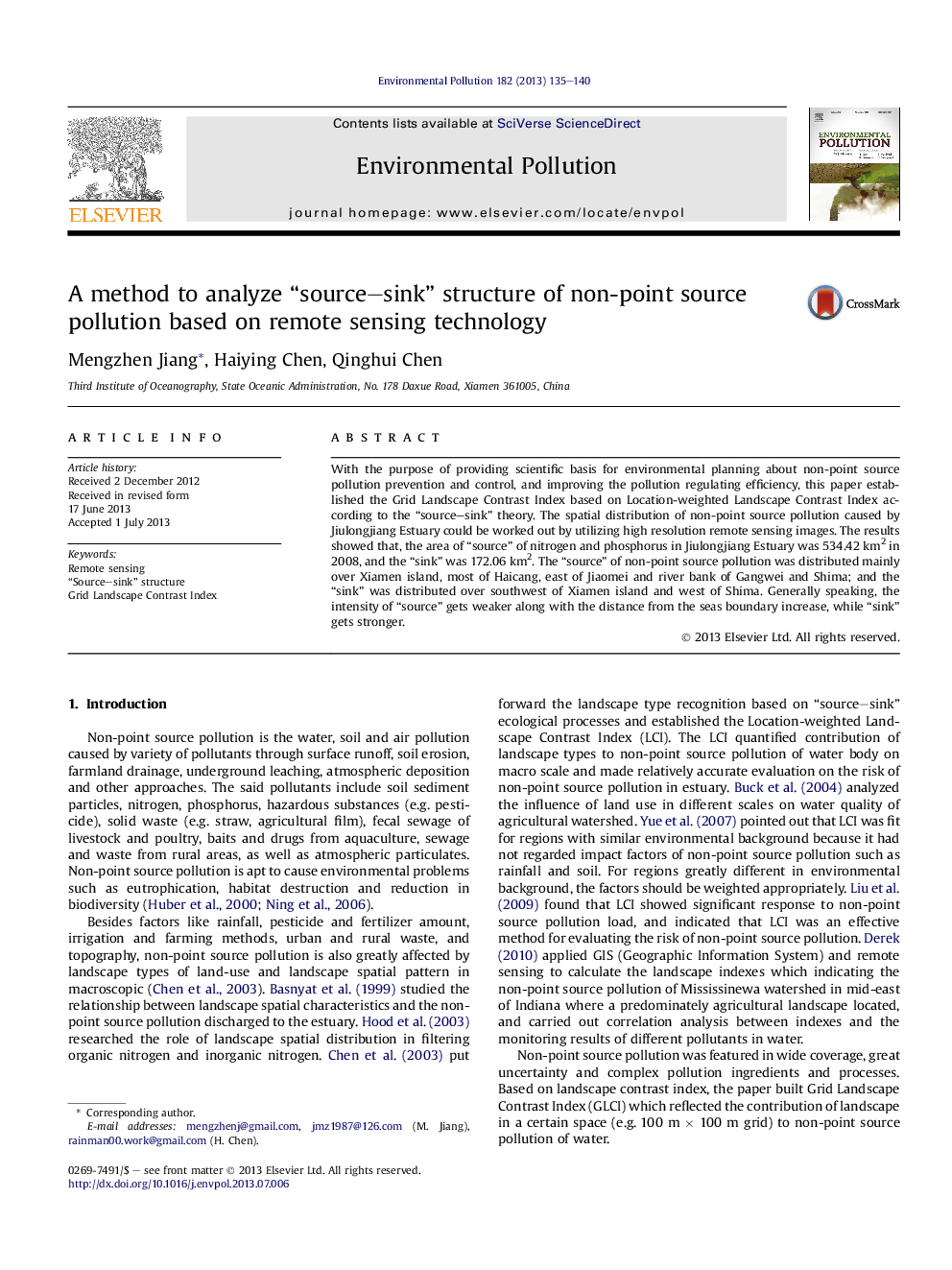| Article ID | Journal | Published Year | Pages | File Type |
|---|---|---|---|---|
| 6317038 | Environmental Pollution | 2013 | 6 Pages |
Abstract
With the purpose of providing scientific basis for environmental planning about non-point source pollution prevention and control, and improving the pollution regulating efficiency, this paper established the Grid Landscape Contrast Index based on Location-weighted Landscape Contrast Index according to the “source-sink” theory. The spatial distribution of non-point source pollution caused by Jiulongjiang Estuary could be worked out by utilizing high resolution remote sensing images. The results showed that, the area of “source” of nitrogen and phosphorus in Jiulongjiang Estuary was 534.42Â km2 in 2008, and the “sink” was 172.06Â km2. The “source” of non-point source pollution was distributed mainly over Xiamen island, most of Haicang, east of Jiaomei and river bank of Gangwei and Shima; and the “sink” was distributed over southwest of Xiamen island and west of Shima. Generally speaking, the intensity of “source” gets weaker along with the distance from the seas boundary increase, while “sink” gets stronger.
Keywords
Related Topics
Life Sciences
Environmental Science
Environmental Chemistry
Authors
Mengzhen Jiang, Haiying Chen, Qinghui Chen,
